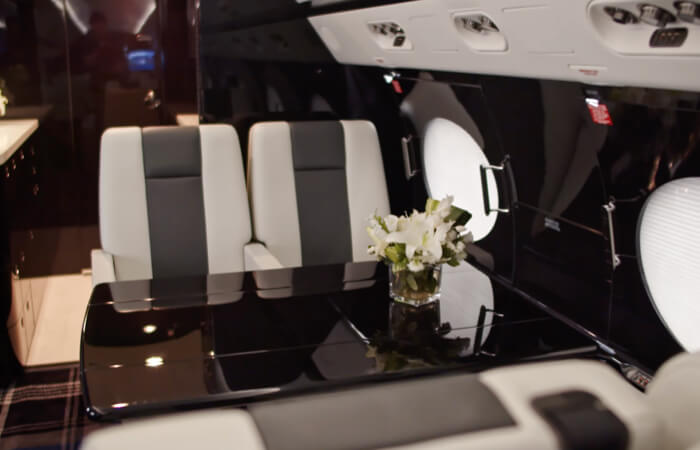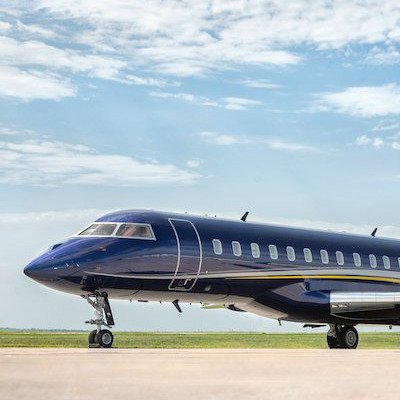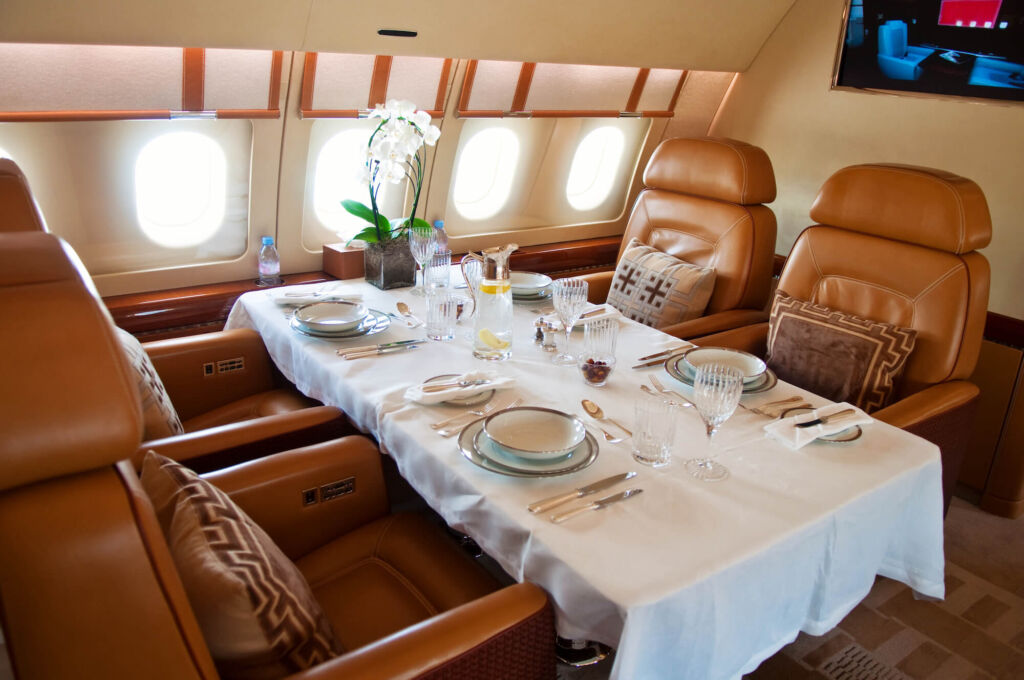
From full berthing ergonomic seats and state-of-the-art in-flight connectivity to a fully equipped galley and luxe finishes, private aircraft owners have access to a vast array of interior design options, enabling them to customize their aircraft according to their exact specifications. In this article, we’ll explore the exciting world of luxury private jet interior design, including popular design elements and key considerations that factor into the design process.
Common Challenges Associated with Private Jet Design
With luxury private jet interior design, the sky is quite literally the limit. With that said, there are certain practical considerations that factor into aircraft design, including:
- Safety Regulations: All aircraft original equipment manufacturers (OEMs) are subject to stringent certification processes that influence interior furnishings and design. Aircraft registered in the U.S. are subject to certain baseline safety regulations, with a few add-ons necessary for aircraft intended for Part 135 (charter) use, which can impact an aircraft’s interior design. Fortunately, Part 91 aircraft typically meet fireblocking certification and regulation requirements for cabin materials, which satisfies the requirements for Part 135 aircraft.
- Airworthiness Requirements: All private aircraft are required to display an Airworthiness Certificate, which demonstrates that the particular aircraft conforms to an approved “type design.” An Airworthiness Certificate may also denote any exemptions issued for the aircraft and approved through a certification process. Any modifications to an aircraft’s basic design — including engineering, flight testing and final certifications, all of which can be costly and time consuming — must be made with the necessary approvals to comply with aviation regulations.
- Spatial Constraints: Despite being more spacious and comfortable than their commercial counterparts, private aircraft still have a limited amount of space to work with when it comes to interior design. There’s also the matter of primary certification: To remain compliant, a floor plan must demonstrate that emergency access is not compromised, and that the structure of the aircraft is sufficient for various attach points and, in some cases, different loads imposed for added weight.
The good news is that an experienced private jet interior designer can work with you to devise creative solutions that maximize living and storage space while still delivering a luxury feel. - Operational Restrictions: Certain private jet interior design decisions come with tradeoffs that could affect aircraft utilization. For example, adding certain appliances, using heavier materials for flooring or even adding cabin sound-proofing can all impact an aircraft’s maximum range capability, as the maximum fuel capacity may need to be reduced to accommodate these changes. Also, certain seating configurations could reduce the passenger capacity or impede functionality, and so on. It is important to be aware of these potential tradeoffs and factor them into your decision-making throughout the design process.
Design Considerations Based on Utilization
Regulatory, operational and safety considerations aside, the most important factor in any private jet interior design plan is the owner’s intended use. For example:
- An aircraft owner who frequently flies long distances might select a floor plan that optimizes for sleeping arrangements.
- An owner who intends to use their aircraft for business purposes might choose to maximize conference or double-club seating arrangements and incorporate additional workspace-style seating throughout the aircraft cabin.
- An aircraft owner who frequently flies with family and friends might prioritize comfortable, lounge-style seating arrangements so that they can gather around a larger dining table to socialize or incorporate an entertainment system to enjoy in-flight music and movies.
No matter what your intended utilization, a qualified private jet interior designer will work to understand your particular travel requirements and specifications and create a design plan that perfectly meets your needs.
The Private Jet Interior Design Process
The private jet interior design process is generally as follows:
- Programming: A designer holds an initial meeting with a client to establish vision and share design preferences. From there, the designer presents a proposal detailing the scope of work, an estimated budget and a rough timeline (including deadlines) for the project.
- Design: The designer develops two to three color boards (including materials) based on the client’s concepts and specifications. The client then provides input and feedback to the designer after reviewing each of the presented options.
- Development: The designer incorporates the client’s feedback and presents one to two final design plans, which include finishes, fixtures, plating, furniture and so on. The designer then reviews these options with the client with the objective of finalizing the design plan and specifications. Additional meetings are held as needed to review any open items until the client gives their final approval.
- Contract: The designer creates final renderings of the design using 2D and 3D modeling software, develops materials color boards for final client approval and requests bids from contractors and vendors.
- Construction: Once contractors and vendors have been selected, construction on the new aircraft interior begins.
It’s important to note that the refurbishment process for pre-owned aircraft is slightly more complex than the design and construction process for new aircraft. This is because refurbishment takes into account prior modifications and can include repair work to accommodate newer preferences, the latter of which usually requires workaround and change orders. However, that shouldn’t deter current owners from refurbishing their aircraft or prospective buyers from considering pre-owned models — it’s possible to achieve high-quality results with both new and pre-owned aircraft.
OEM In-House Services vs. Third-Party Service Centers
Owners interested in redesigning the interior of their private aircraft have the option to work with either the OEM’s in-house design team or a third-party service center. Both are perfectly viable options; however, for best results, a private aviation consultant can match an aircraft owner with the provider best suited for the job.
For prospective buyers looking to purchase and design the interior of a new aircraft, working with an OEM’s design team could be the right move. The reason for this is that OEM engineers will be familiar with the exact condition of the newly certified aircraft and will not have a prior history of modifications to consider, they way they would with a pre-owned aircraft. Furthermore, the OEM may have proprietary or otherwise readily available options that align with the buyer’s desired features, which can streamline the delivery process, eliminating the need for separate post-delivery modification projects.
For individuals interested in redesigning the interior of their existing aircraft, or prospective buyers looking to purchase and refurbish a pre-owned aircraft, working with a third-party service center can be a smart choice. In addition to potentially being a more competitive option, third-party service centers tend to be creative, having the experience and ability to work with a wide variety of aircraft makes and models and, in many cases, already hold approved supplemental type certifications (STCs).
An STC is an FAA-approved modification to an aircraft’s original design and basic type certificate. The more STCs a third-party service center holds, the more pre-approved flexibility and customizability it can offer in terms of private jet interior design.
If you’re unsure whether to work with an OEM or a third-party service center for your private jet interior design project, a private aviation consultant can help you evaluate your options and determine which one is best based on your needs.
What to Look for in a Third-Party Service Center
For aircraft owners interested in partnering with a third-party service center to redesign or refurbish their private jet interior, there are a few things to look for:
- Credentials: Any third-party service center an aircraft owner hires to update their private jet’s interior design should be FAA-certified, at minimum, and recognized within the industry as a proven, quality organization. A third-party service center should also be able to provide references for similar types of work they have performed, preferably on your model of aircraft.
- Services: What specific services does the service center provide? Is it an OEM-authorized service center for your model aircraft? Does it offer in-house engineering, have its own woodworking shop, and so on, or does it rely on a network of contractors for those services? It’s important to ensure that any service company you work with can perform or effectively manage the specific services you require and guarantee the quality you expect.
- Specializations: Certain independent service centers specialize in particular aircraft makes and models, the most common example being older, vintage aircraft; by comparison, OEMs tend to concentrate on their newer products. If you have an older aircraft and have highly customized plans and particular design needs, it could be in your best interest to work with a specialized shop.
Again, a private aviation consultant can be a valuable asset when evaluating third-party service centers and can even leverage their network to connect you with several qualified shops from which to choose.
Popular Private Jet Interior Design Features
When it comes to private jet interior design, no two aircraft are the same; however, there are certain design elements that are incredibly popular, including:
- Advanced in-flight entertainment environment with 4K HDR displays, surround sound systems, live-streaming network connectivity and customized mobile device controls
- “Office in the sky” capabilities, including satellite, worldwide Wi-Fi and cellular systems
- Custom LED lighting systems with preset color schemes, all controlled via mobile device and cabin management system
- Custom cabin configurations to maximize passenger capacity or desired function
- Heated flooring areas
- Walk-in showers
- Full-sized gourmet galley
- Custom-designed berthing and sleeping quarters
- Luxe fixtures and finishes, including hand-stitched leather seating, hardwood flooring, accent lighting, brushed metal plating and more
Luxury Private Jet Interior Design Examples
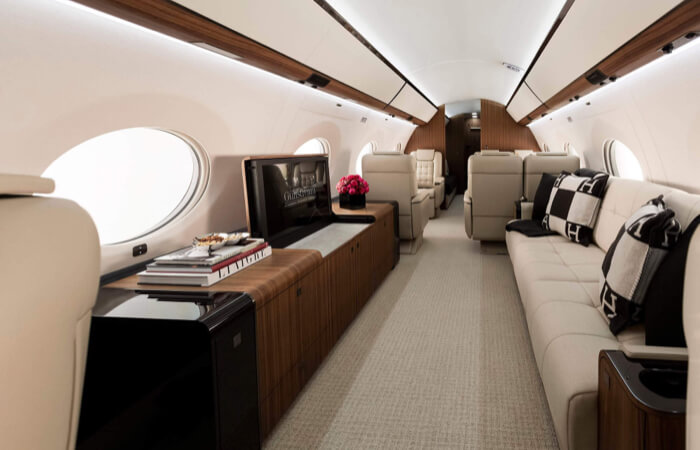
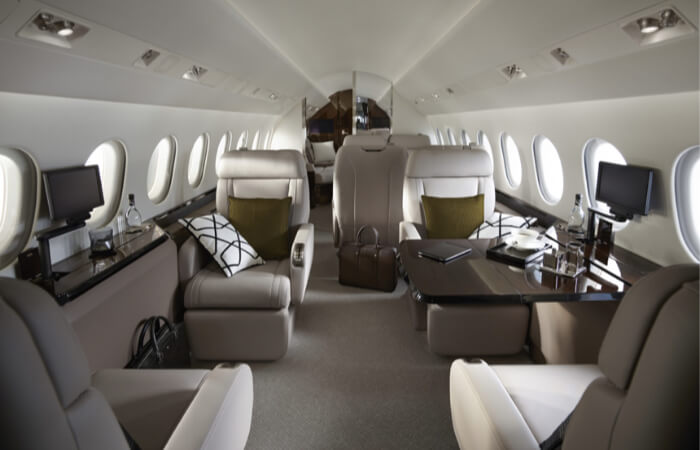
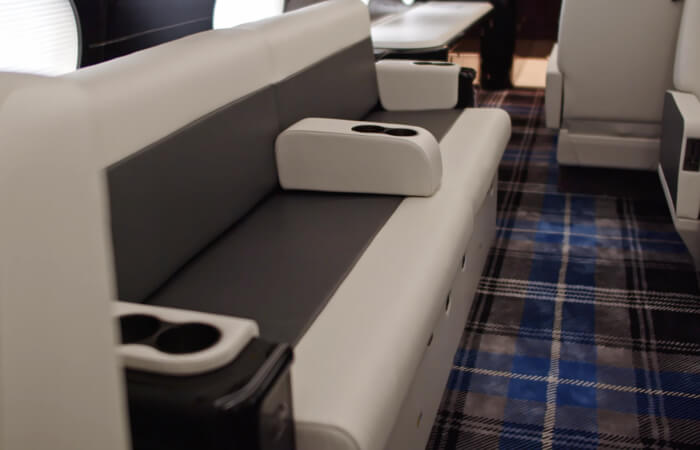
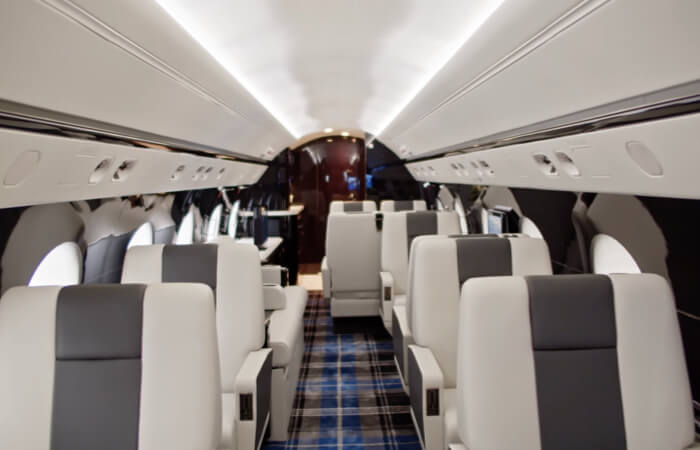
Case Study: Private Aircraft Refurbishment
See how Essex Aviation partnered with Duncan Aviation to reimagine the interior of a pre-owned Bombardier Global Express XRS.
Start Your Next Private Jet Interior Design Project
Vetting design teams and service centers, evaluating design plans and proposals, acting as an onsite representative throughout the production or refurbishment process and more — the qualified consultants at Essex Aviation Group provide a wide range of services to help our clients make their luxury private jet interior design visions a reality. Discover what Essex Aviation can do for you — contact us today to learn more.




